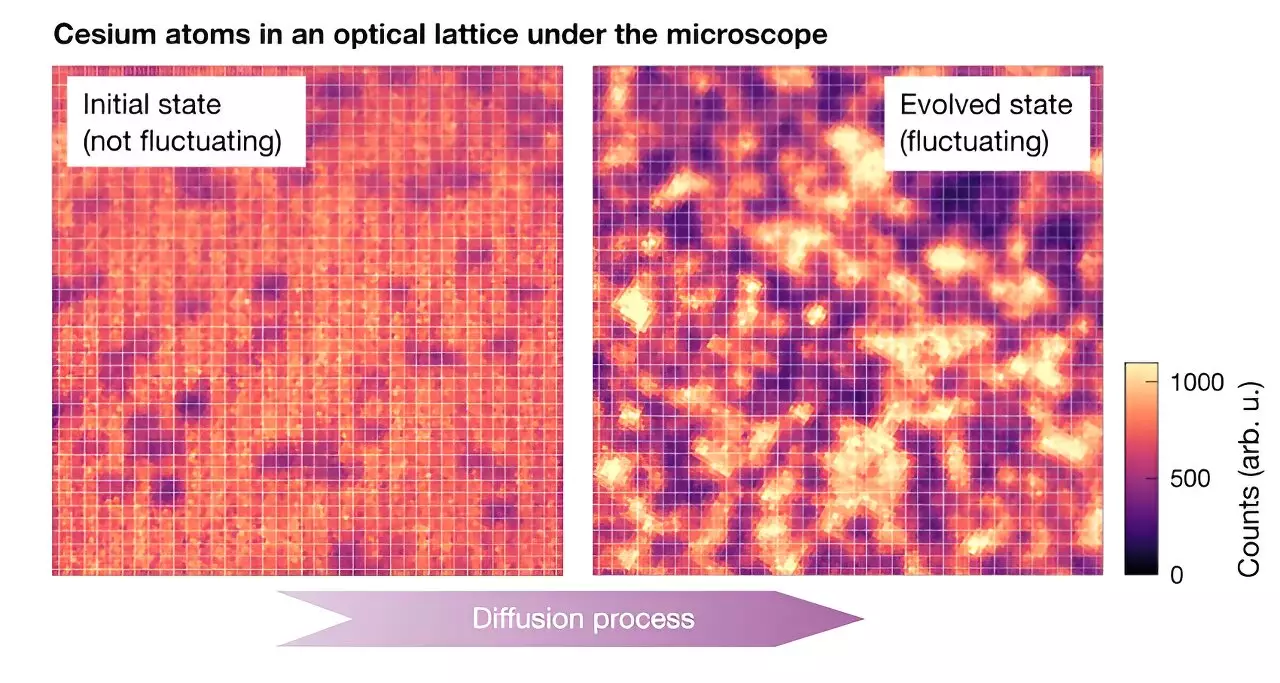Quantum systems present a captivating and intricate field of study within modern physics, where the behavior of particles deviates from classical expectations. Researchers at Ludwig-Maximilians-Universität and associated institutions have embarked on a groundbreaking study, shedding light on how to simulate large quantum systems effectively. Their recent findings, published in *Nature Physics*, delve into the domain of equilibrium fluctuations and reveal how these quantum systems can be understood through the lens of fluctuating hydrodynamics (FHD).
The Challenge of Simulating Quantum Many-Body Systems
The crux of quantum physics lies in the interactions of numerous particles, which complicates the task of prediction and simulation. As Julian Wienand, a co-author of the study, articulated, envisioning a large ensemble of particles confined in a box and tracking their individual movements presents an insurmountable challenge due to the limitations of computational resources. Realistically, simulating every particle’s behavior is unfeasible, particularly in chaotic systems where numerous interactions occur simultaneously.
To navigate these complex waters, researchers propose harnessing hydrodynamic principles. Hydrodynamics provides an alternative framework for understanding particle interactions within these systems by representing them as a continuous density field instead of as individual entities. This paragon of simplification allows physicists to apply differential equations, aiding in the prediction of system evolution, despite the randomness inherent in the system’s microscopic structures.
FHD serves as an evolution of classical hydrodynamics, integrating thermal fluctuations. The premise of FHD is straightforward: while individual particles fluctuate rapidly, these fluctuations can be modeled statistically. By treating them as white noise, researchers can effectively encapsulate their impacts on a continuous density field. This becomes particularly beneficial in the realm of quantum physics, where systems are governed by the idiosyncrasies of quantum mechanics such as entanglement and superposition—a scenario far removed from classical intuition.
Interestingly, the study highlights that the entire behavior of these chaotic quantum systems hinges on a limited number of parameters, notably the diffusion constant. While FHD has been extensively applied to classical systems, its applicability in chaotic quantum phenomena poses intriguing questions. Establishing FHD as a reliable model for quantum systems could mark a significant advancement in comprehending their complexities and offer improved predictive capabilities.
The research team utilized an innovative approach through a 133Cs quantum gas microscope, allowing for the observation and manipulation of ultracold cesium atoms within an optical lattice. This state-of-the-art tool enables researchers to analyze interactions at a granular level, detecting the occupation of specific lattice sites with unprecedented precision. Such capabilities are crucial for understanding particle statistics and measuring fluctuations in atomic presence—essential for validating their theoretical models.
By preparing a structured arrangement of atoms in an excited state and subsequently allowing them to interact under reduced lattice depth, the researchers effectively simulated a diffusion process leading to thermalization. This experimental setup illuminated the fluctuations over time, granting insights that affirmed the relevance of FHD for capturing the essence of chaotic many-body dynamics.
The researchers’ findings suggest a remarkable parallel between classical and quantum systems. Despite the inherent complexities of quantum mechanics, the macroscopic behavior can often be encapsulated by simplistic models reflecting established laws in classical physics. The demonstration that the diffusion constant, typically deemed an equilibrium characteristic, retains relevance even in out-of-equilibrium conditions, further bridges the gap between classical and quantum realms.
This elucidation not only paves the way for better predictive models for chaotic quantum systems but also challenges the notion that complexity at the microscopic level prohibits comprehension at the macroscopic scale. With FHD elucidating connections between equilibrium and dynamic states, it presents a promising framework for extending our understanding of quantum many-body systems.
Future Directions in Quantum Research
Looking ahead, Wienand and his colleagues remain committed to pushing the boundaries of quantum research. Future simulations aim to explore critical questions surrounding non-thermalizing systems, the behavior of fluctuations in more complex situations, and the potential modifications required for FHD to incorporate advanced quantum observables. These investigations could prove pivotal in unlocking the deeper mechanisms governing quantum dynamics, opening further avenues for exploration in the rich field of quantum physics.
The research conducted by this esteemed group of scientists stands as a milestone in the evolving landscape of quantum physics, championing the role of fluctuating hydrodynamics in unraveling the complexities of chaotic quantum systems. As they continue to explore and expand upon these foundational concepts, the bridge between classical theories and quantum realities becomes increasingly robust, setting the stage for future innovations in our understanding of the quantum world.

